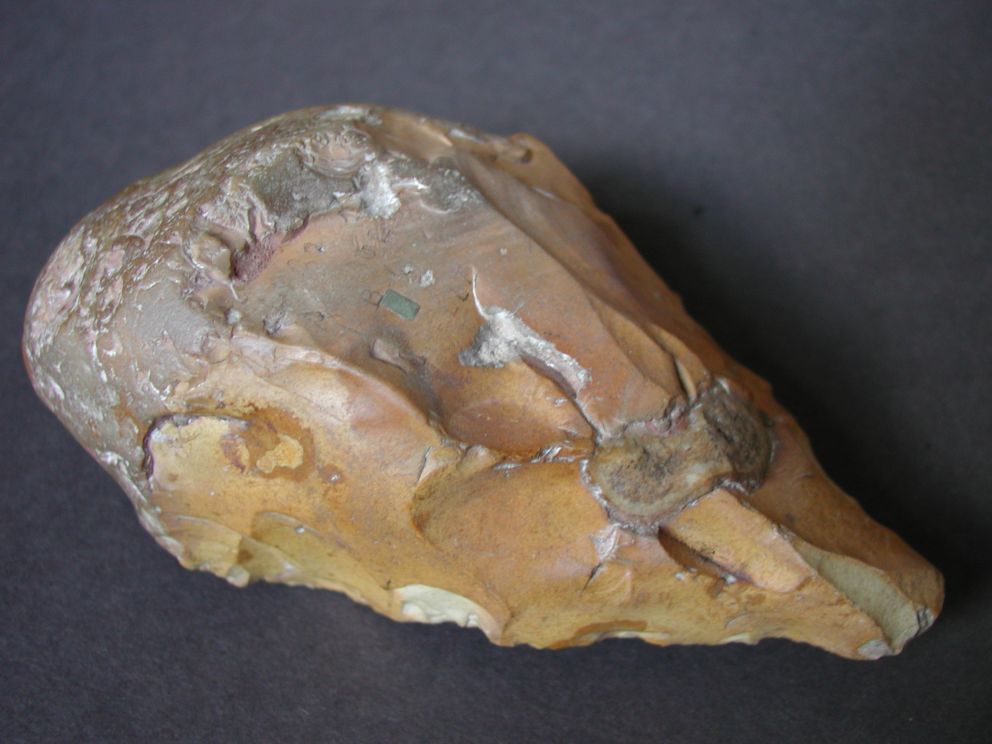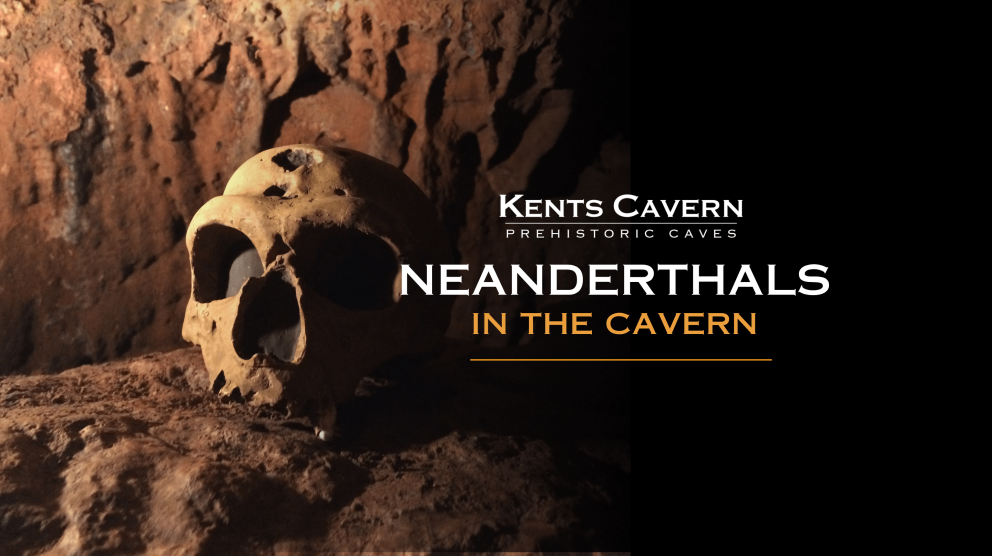Homo heidelbergensis: How we know they were here at Kents Cavern


The earliest species of human to have lived here at Kents Cavern were Homo heidelbergensis, named after Heidelberg in Germany. They were the species that predated Neanderthals, and are likely the direct ancestor to them. They had slightly smaller brains, but were generally as tall as we are today, and more muscular. Due to their slightly smaller brain size their tools were not as complex as later human species, but they were still able to make tools and weapons out of wood, and were capable of taking down very large prey animals such as the straight-tusked elephant and rhinoceros.
How Do We Know They Were Here?
People wouldn’t have initially lived inside the cave, 600,000 years ago as the caves were not accessible at the time, but Homo heidelbergensis occupied Britain for around 200,000 years. It’s likely later groups of heidelbergensis would have ventured inside of Kents Cavern. Yet we did not find any of their bones here - so how do we know they were here?
Traces of H.heidelbergensis in Britain go back as far as 600,000 years ago in the form of their tools. Different species of humans create different kinds of tools, these tools are categorised into ‘cultures’. Using these cultures, palaeoanthropologists can track where humans went and when, even if the remains of these humans are not found.
It is the discovery of tools that allowed us to place Homo heidelbergensis at Kents Cavern, a tool in particular called a handaxe. The handaxe was the most widely used tool in all of human history, being used across the planet by multiple distinct human species for over one and a half million years. This tool was the swiss army knife of the stone age; it could be used for killing, butchering, skinning, de-barking, digging, or hammering. As well as being extremely versatile, they were also relatively easy to make, at least when compared to the complex variety of tools used by later hominins. Unlike more complicated stone tools, handaxes are made from a large nodule of flint, chert or rock, also known as a core. From here large flakes were hammered off until the main shape of the handaxe is essentially chiselled into shape. These flakes could also be refined into tools of their own for more delicate tasks (with some examples of this also being found at Kents Cavern), but for a lot of instances the handaxe alone was the end result.

Their tools
These tools are the oldest type of handaxe found in Britain - a culture known as Achulean, more specifically proto-Achulean. They are very similar, but slightly more crude, than handaxes found at Boxgrove. This is a site in West Sussex, England where a single bone of a H. heidelbergensis individual was found (the only bone from this species found in all of Britain), alongside Achulean handaxes.
We know the handaxes found here at Kents Cavern belonged to H.heidelbergensis because they are the only species of human to have lived in Europe at the time the sediment they were found in was deposited. For a long time, however, the age of the oldest tools at Kents Cavern remained unclear. They were found in the deepest layers of mud and so predate the caves being accessible to humans and animals, around 500,000 years ago. More recently however, extremely similar tools from the ancient Bytham river and a quarry site in Kent have been found. These sites can be dated, and come to a staggering 600,000 years old. As the Kents Cavern handaxes are nearly identical to these, it is suggested they are around the same age and created by the same group of humans. It is now thought that H. heidelbergensis would have lived outside of Kents Cavern 600,000 years ago, and then their tools were washed into the caves at a later date, creating one of the lowest and oldest layers of Breccia.
References
Dinnis, R., & Stringer, C. (2023). Britain: One million years of the human story. (2023 ed.) London: Natural History Museum.
Pengelly, W. (1884). The Literature of Kents Cavern, Part V. Report and Transactions of the Devonshire Association, Vol. 16, pg. 189. Retrieved from: Report & Transactions of the Devonshire Association Vol 16 (1884) : Devonshire Association for the Advancement of Science Literature & the Arts : Free Download, Borrow, and Streaming : Internet Archive
Wilson, C., Pope, M., & Shipton, C. (2024). Revisiting the handaxes of Kents Cavern. Quaternary International, Vol. 685. DOI: https://doi.org/10.1016/j.quaint.2024.01.007






 picked.cave.lively
picked.cave.lively
